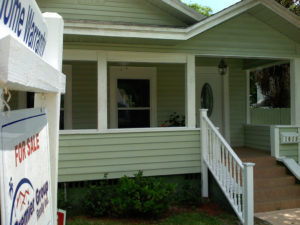Solar Suburbia to Power Modern Cities
Urban sprawl may not be as bad for the environment as we thought -- as long as every home is fitted with solar panels and electric cars become the norm.
By Paul Brown, Climate News NetworkThis piece first appeared at Climate News Network.
LONDON — Modern planners are building compact cities, believing tightly controlled zones are better for the environment. New research suggests the opposite: urban sprawl might be a better option, with solar power fitted to suburban houses and the adoption of electric cars transforming the energy needs of a city.
Research in Auckland, New Zealand – the largest urban area in the country and a city built for the age of the motor car – shows that solar panels fitted to the average suburban home can produce enough power for that household, extra to charge an electric vehicle, and still generate enough watts to export a surplus to the grid.
Adopting a citywide approach to fitting solar panels and providing charging points for cars would enable suburban homes to provide most of the power for the city centre as well as keeping the transport running, according to Professor Hugh Byrd, from the School of Architecture at the University of Lincoln in England.
In collaboration with the New Zealand Energy Centre and the University of Auckland, Byrd and his colleagues found that detached suburban houses typical of a motor car age city are capable of producing ten times more solar power than is possible from skyscrapers or other commercial buildings. The calculations are based on a detailed cross section of Auckland, which has skyscrapers in its business centre but has most of its homes spread out over the surrounding countryside in an urban sprawl.
Transform planning
Although every city is different, the pattern of building in Auckland is repeated in many cities around the globe. Byrd’s idea is that if planners insist solar panels be fitted to properties and charging points be provided for electric cars, then cities judged to be damaging to the environment could be transformed.
“While a compact city may be more efficient for internal combustion engine vehicles, a dispersed city is more efficient when distributed generation of electricity by photovoltaic installations is the main energy source and electric vehicles are the principal mode of transport” says Byrd.
“This research could have implications on the policies of both urban form and energy. Far from reacting by looking to re-build our cities, we need to embrace the dispersed suburban areas and smart new technologies that will enable us to power our cities in a cost-effective way, without relying on ever dwindling supplies of fossil fuels.
Sprawl is good
“This study challenges conventional thinking that suburbia is energy-inefficient, a belief that has become enshrined in architectural policy. In fact, our results reverse the argument for a compact city based on transport energy use, and completely change the current perception of urban sprawl.”
Byrd concedes that the only way his ideas will work is if planning policy made fitting solar panels obligatory. Planning would also need to require the installation of photovoltaic roofing, smart meters and appropriate charging facilities for vehicles as standard in every household.
The advantages would be a dramatic reduction in carbon emissions, long term energy security, and a reduction in city pollution.
Your support matters…Independent journalism is under threat and overshadowed by heavily funded mainstream media.
You can help level the playing field. Become a member.
Your tax-deductible contribution keeps us digging beneath the headlines to give you thought-provoking, investigative reporting and analysis that unearths what's really happening- without compromise.
Give today to support our courageous, independent journalists.






You need to be a supporter to comment.
There are currently no responses to this article.
Be the first to respond.